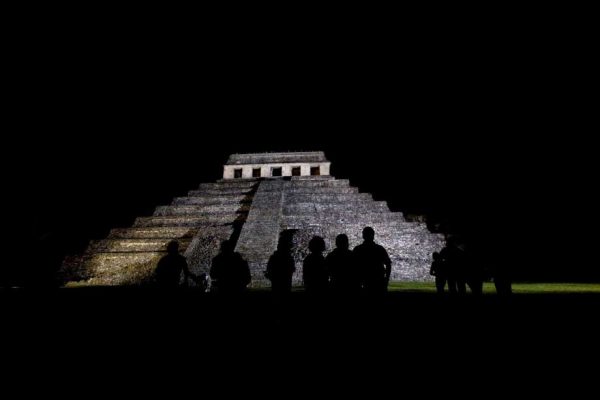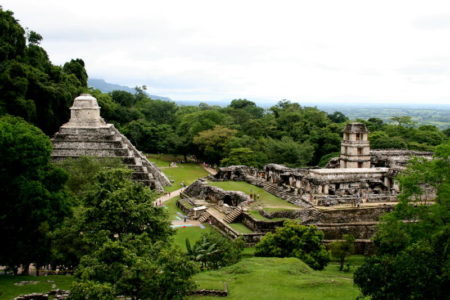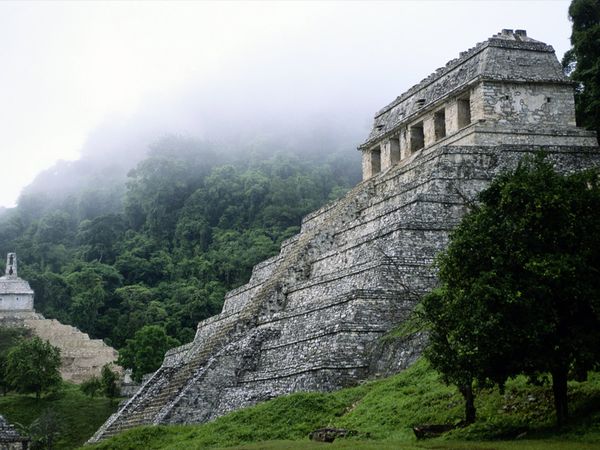A prime example of a Mayan sanctuary of the classical period, Palenque was at its height between AD 500 and 700, when its influence extended throughout the basin of the Usumacinta River. The elegance and craftsmanship of the buildings, as well as the lightness of the sculpted reliefs with their Mayan mythological themes, attest to the creative genius of this civilization.
Located in Chiapas, Mexico, this World Heritage Site was one of the Mayans’ most critical ceremonial centers and home of the dynasty of the celebrated King Pakal. It has impressive temples, tombs, palaces, squares, sculptures, and hieroglyphic inscriptions, highlighting the fabulous Temple of Inscriptions.
Its incredible architecture, sculptural representations, and writings on the walls tell the site’s religious, political, and civil history and the great battles that were held and gave power to the city. In this place, a burial chamber was discovered composed of a complete human skeleton, an offering made up of three plates, and a niche with several green stone figures.

The Temple of Inscriptions is a pyramid over 25 yards high that features countless hieroglyphic texts and stucco reliefs on its pillars. It has an interior staircase that leads to the tomb of the powerful Pakal. This building has two chambers, one with five entrances and stucco piers and the other with a central room and two laterals. A four-corner altar is located on the outer staircase.
The city was founded during the Late Preclassic, which corresponds to the beginning of the Christian era. Its first inhabitants probably migrated from other sites in the nearby region. They always shared the cultural features which define the Maya culture, as well as a level of development that allowed them to adapt to the natural environment. After several centuries, ca. 500 A.D., the city rose to be a powerful capital within a regional political unit. Without a buffer zone the total area of the archeological site is 1780 hectares, 09 areas and 49 square meters and 1,400 buildings have been recorded, of which only about 10% have been explored.

Palenque has been the object of interest of numerous travelers, explorers and researchers since the 18th century. It illustrates one of the most significant achievements of mankind in the American continent. The ancient city has a planned urban layout, with monumental edifices and some of the largest clearings found in all the Maya area. Numerous residential areas with habitation units, funerary, ritual and productive activity areas were placed around the administrative and civic ceremonial centre. The palencano style is unique for its high degree of refinement, lightness and harmony. It includes buildings with vaulted roofs upon which pierced crestings emphasized its height. Its architecture is also characterized by its interior sanctuaries and modeled stucco scenes found on its freezes, columns, walls, crests, as well as ogival vaults, vaulted halls connecting galleries and T-shaped windows, among other unique architectural features.

The sophisticated architectural designs and the rich decoration reflect the history and ideology of the ruling class and incorporate the writing and calendaric systems. The architecture of the site is integrated in the landscape, creating a city of unique beauty.
TYT Newsroom


